Addressing Common Pain Complaints While Working From Home and Being More Sedentary
For people who work from home on a computer, doing physical activity for posture is important. We have tips and exercise ideas you can try to prevent an onset of common ailments that come with being more sedentary. (If you need tips on how to stay active, we’ve got that too!)
Neck Pain
If you are finding yourself sitting and laying down more often at home, neck pain is a common pain complaint that accompanies being less active. Our furniture in our homes are designed for comfort rather than postural support. This means often times our heads are not supported properly due to the soft cushions in our favorite recliners and sofas. Here are some tips to prevent increased neck pain.
- Be sure you are not sitting with your head in a forward jutted position. This causes increased tightness in the muscles up by your skull in the back of your head, which are a common culprit of headaches.
- Do not sit in a position that requires you to have your neck turned excessively one way or the other for too long. Staying in one position that is not a neutral spine position (turning your head one way, having your head bent to the side one way) can cause stiffness and strained neck muscles.
- 2-3 times per day do some cervical retractions and scapular retractions. These exercises encourage improved posture and decreased neck tightness.
Cervical Retractions
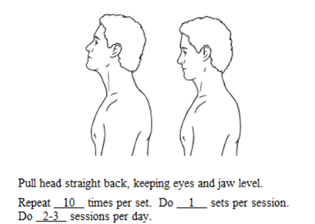
Low Back Pain
Some common culprits for low back pain include tight hip flexors, piriformis, and hamstring muscles. Weak gluteal muscles and abdominals are also common culprits for causing low back pain. Poor posture, such as sitting slouched down on the couch without low back support or standing and resting your weight through your pelvis, changes the way the hips and low back are aligned, leading to low back pain. Follow these simple tips to decrease low back pain.
- Get up every 30-60 minutes to walk around your home a bit. This helps with joint lubrication, muscle flexibility, preventing low back stiffness, and circulation.
- When sitting on the couch or in a chair, use a small pillow or a rolled up towel and place it in the small of your back (lumbar spine) for support.
- If you are in a forward bent position for a prolonged period of time (doing laundry, loading the dishwasher, etc.) perform lumbar extension (see picture below) intermittently (every 30-60 minutes as needed).
- If you have an exercise ball available, sit on the exercise ball for 5-10 minutes for core strength.
Seated on Exercise Ball – Marching
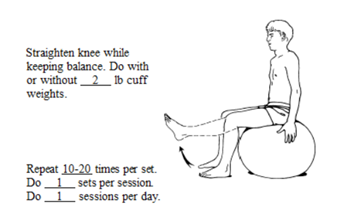
Sit to Stands
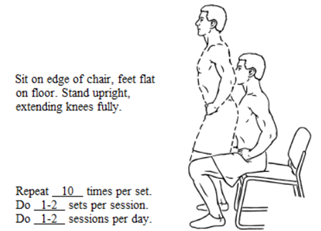
Hip Hikers

Stretches
Hip Flexors/ Calf Muscles
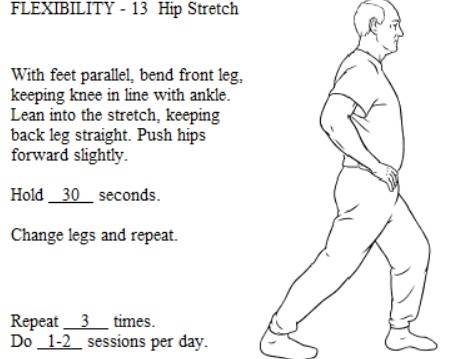
Hamstrings
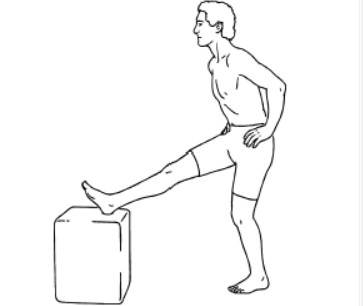
Follow these tips to prevent onset of body pain while you’re at home.
Stay healthy!